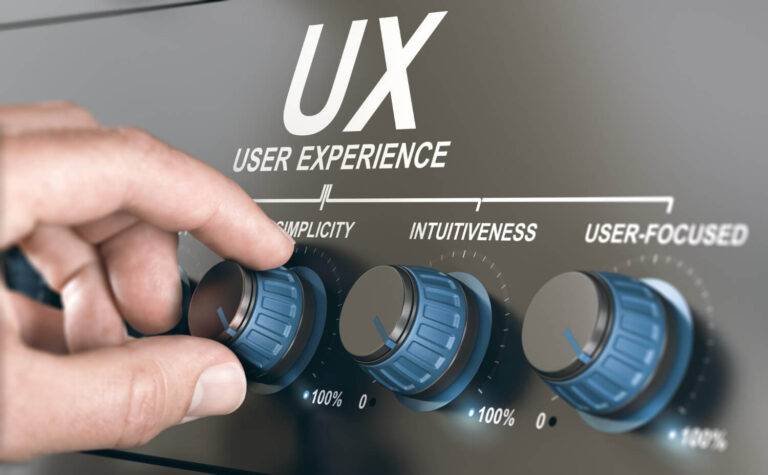- Anca Sofan, Senior UX Designer at BoatyardX
In today’s rapidly evolving digital landscape, the success of a product or service hinges on the user experience (UX) it delivers. A seamless and satisfying UX can propel customer satisfaction, drive engagement, and fuel conversions. Conversely, a lackluster UX can lead to frustration, disengagement, and ultimately, the loss of valuable customers. As technology continues to advance, it is vital for businesses to regularly evaluate and enhance their UX to ensure it remains top-notch.

1. High Bounce Rates and Reduced Conversion Rates
Similarly, if your conversion rates are plummeting, it suggests that users struggle to find what they need or face obstacles during the conversion process. A well-crafted UX should guide users effortlessly through their desired actions, eliminating any friction and maximizing the chances of conversions. Moreover an exceptional UX should captivate users, encouraging them to explore further, return for more visits, and forge a lasting connection with your brand.
By thoroughly analysing user behaviour, conducting meticulous usability tests, and actively seeking feedback, you can identify pain points and areas that require immediate improvement. Enhancing the onboarding process, streamlining navigation, and personalizing the experience can reignite user engagement and bolster customer retention.
2. User Complaints and Negative Feedback
When users consistently voice their dissatisfaction or frustration with your digital product, it’s an undeniable signal that your UX is falling short. Negative reviews, social media complaints, or an influx of customer support queries related to usability issues are clear indicators that your UX is not meeting expectations. But what should you do if you don’t get any feedback at all or your access to the users is difficult? Make it your priority. You’ll thank us later.

Many articles have been written on the importance of listening to your users. Listening attentively to user feedback allows you to gain valuable insights into specific pain points, enabling you to address them effectively and elevate the overall user experience. By actively engaging with users and resolving their concerns, you can foster a positive brand image and customer loyalty.

3. Outdated Design and Technological Lag
As technology progresses, user expectations evolve in tandem. Outdated design elements or reliance on obsolete technologies can create a negative perception of your digital product’s reliability and relevance. While both design and technology play a significant role in delivering an outstanding UX, it’s important to understand their individual impacts. Let’s delve deeper into each aspect to clarify their significance and provide a clearer understanding of when a UX upgrade is needed.
Design: Design plays a pivotal role in your digital product, encompassing visual aesthetics, layout, and user interface. Outdated design elements like inconsistent colour schemes, unappealing typography, or cluttered layouts can render your product unattractive and disconnected from contemporary design trends. Users expect visually engaging and intuitive interfaces, with a seamless, frictionless journey that enables them to effortlessly achieve their goals. Failing to meet these expectations can lead to a poor user experience. It’s essential to assess your design in line with current industry standards and trends to pinpoint potential areas for enhancement.
Technology: While design influences the visual aspect of your digital product, technology refers to the underlying infrastructure, which impacts functionality and performance. Slow loading times, compatibility issues, or lack of support for newer devices, can hinder the user experience. While it is possible for a product to offer a solid user experience despite using older technologies, it’s important to consider the long-term implications. Outdated tech may limit your ability to implement new features, integrate with other systems, or provide a seamless user experience across multiple platforms. Assessing the technological aspects of your product will help determine if an upgrade is necessary to meet user expectations and maintain long-term viability.
Understanding User Expectations: To truly gauge when a UX upgrade is needed, it’s essential to have a deep understanding of user expectations. The Kano model, which categorizes user needs into basic, performance, and excitement factors, can provide valuable insights. Basic factors are fundamental user expectations, performance factors are aspects that contribute to user satisfaction when fulfilled, and excitement factors are unexpected features that delight users. Analyzing user feedback, conducting user research, and staying informed about current industry trends can help establish a baseline of user expectations and guide your UX improvement efforts.
4. Lack of Mobile Optimisation
Given that a majority of internet users access content through mobile devices, it’s imperative to assess whether your users primarily utilize mobile devices to access your product or website. Understanding their device preferences will provide valuable insights into the importance of mobile optimization for your UX. Failing to optimize your UX for mobile devices can have detrimental effects on your business. A seamless adaptation to varying screen sizes and touch interactions is crucial to avoid frustrating experiences for mobile users.

Mobile optimization goes beyond responsive design. It entails incorporating touch-friendly elements, streamlining navigation, and ensuring swift loading times. By prioritizing mobile optimization, you can deliver a user experience that caters to the specific needs and expectations of mobile users. This investment is no longer a luxury but a necessity to maintain a competitive edge in today’s mobile-dominated world.
Considering the context of your users’ device preferences and actively investing in mobile optimization will demonstrate your commitment to delivering a smooth and enjoyable user experience across all devices, fostering engagement and loyalty.
A remarkable user experience is a cornerstone of success in the digital realm. By paying attention to clear signals such as high bounce rates, negative feedback, decreased engagement and retention rates, outdated design and technology, and a lack of mobile optimization, you can identify areas that require immediate attention. Regularly evaluating and upgrading your UX based on user feedback and industry best practices will enable you to forge strong connections with your audience, drive conversions, and remain at the forefront of the ever-evolving digital landscape.
A BoatyardX we have the tools, technologies, skills and knowledge to help you modernise your apps. We operate exactly in this space, designing and delivering innovative platforms and solutions that radically reinvent or replace workflows and processes previously stitched together by clunky apps and manual tasks. We have been very busy in the last year, meaning that some businesses do see a downturn as a good time to innovate and do things differently.
Talk to our experts, who can help you design a roadmap for application modernisation with an approach that best aligns with your business strategy.
If you’d like to learn more, get in touch via letsgettowork@boatyardx.com
Read more on this topic
More organisations are starting to realise that the cloud is a great enabler for innovation, not just a more efficient way of running IT applications and services.
Skill gaps, high employee turnover and fierce competition for limited talent have only added to the pressure that businesses are facing from inflation. Though it may seem counter intuitive, it’s actually a good time to modernise or even replace applications, because they could be compounding your skills challenges.
Meta has called 2023 ‘a year of efficiency’ and they are far from alone in the corporate world. Many businesses are knuckling down, shedding staff and focussing on the old adage of ‘doing more with less’. Belt tightening is a business initiative again, like the bad old days of 2008.


